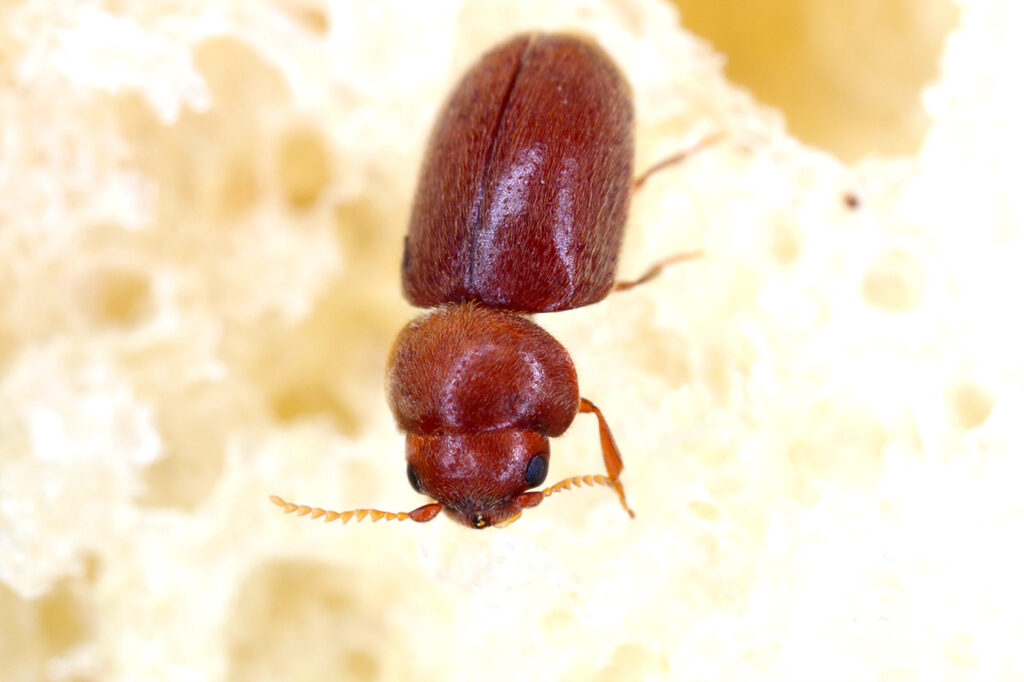Cigarette Beetle
The cigarette beetle is also known as the tobacco beetle.
These beetles are small and oval shaped with a light brown in color. The larvae and adults feed on a wide variety of foods including tobacco, seeds, cereals, dried fruits, nuts and chocolate. Their droppings contaminate far more food than they eat.
Cigarette Beetles go through 4 distinct stages of growth: egg, larva, pupa, and adult. The larvae feed and when mature, make a silken cocoon covered with particles of food. The life cycle may take 6 to 8 weeks to complete and is affected by both the temperature and humidity. Adult Cigarette Beetles can fly. Due to this they can infest food that is far away from the initial infestation. They are a common kitchen pantry pest and general pest of stored foods.

Cigarette Beetles are found worldwide in warm climates where there is a supply of food available for them to eat
Why are they called Cigarette or Tobacco Beetles?
The cigarette beetle is also known as the tobacco beetle because it was originally identified in tobacco products. It is now common in food products such as flour, cereal, rice, pasta, grain and other dried foods. The larvae feed and when mature make a silken cocoon covered with particles of food. The life cycle may take 6 to 8 weeks to complete and is affected by both the temperature and humidity. Adult Cigarette Beetles can fly which makes them capable of infesting food that is far away from its initial infestation location.
Cigarette beetles belong to the family of longhorned beetles, and they are also known as cigarette beetle, or fumigation beetle. The cigarette beetle is a very common pest in homes and restaurants, particularly in areas where food is prepared or stored. The larvae feed on many different foods such as flour and grain products. The adults eat these foods, but they also scavenge on dead insects and other organic material. They are found in all parts of the United States and Canada.
The majority of beetles lay their eggs in soil where there is decaying matter, such as dead plants or in rotting wood piles. Some species lay their eggs directly into plant tissues. Others deposit them inside other insects such as termites or ants which care for them until they hatch into larvae.
